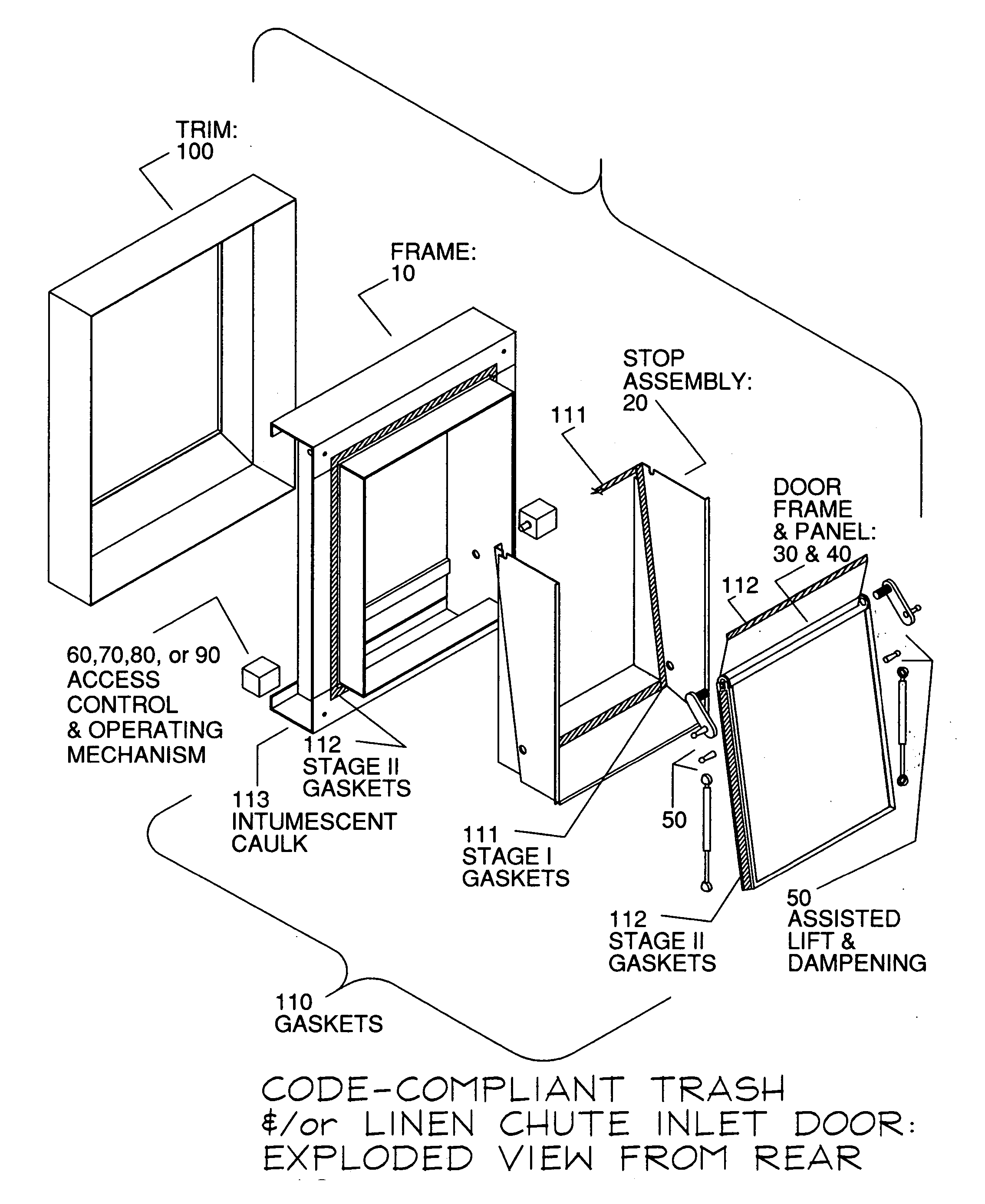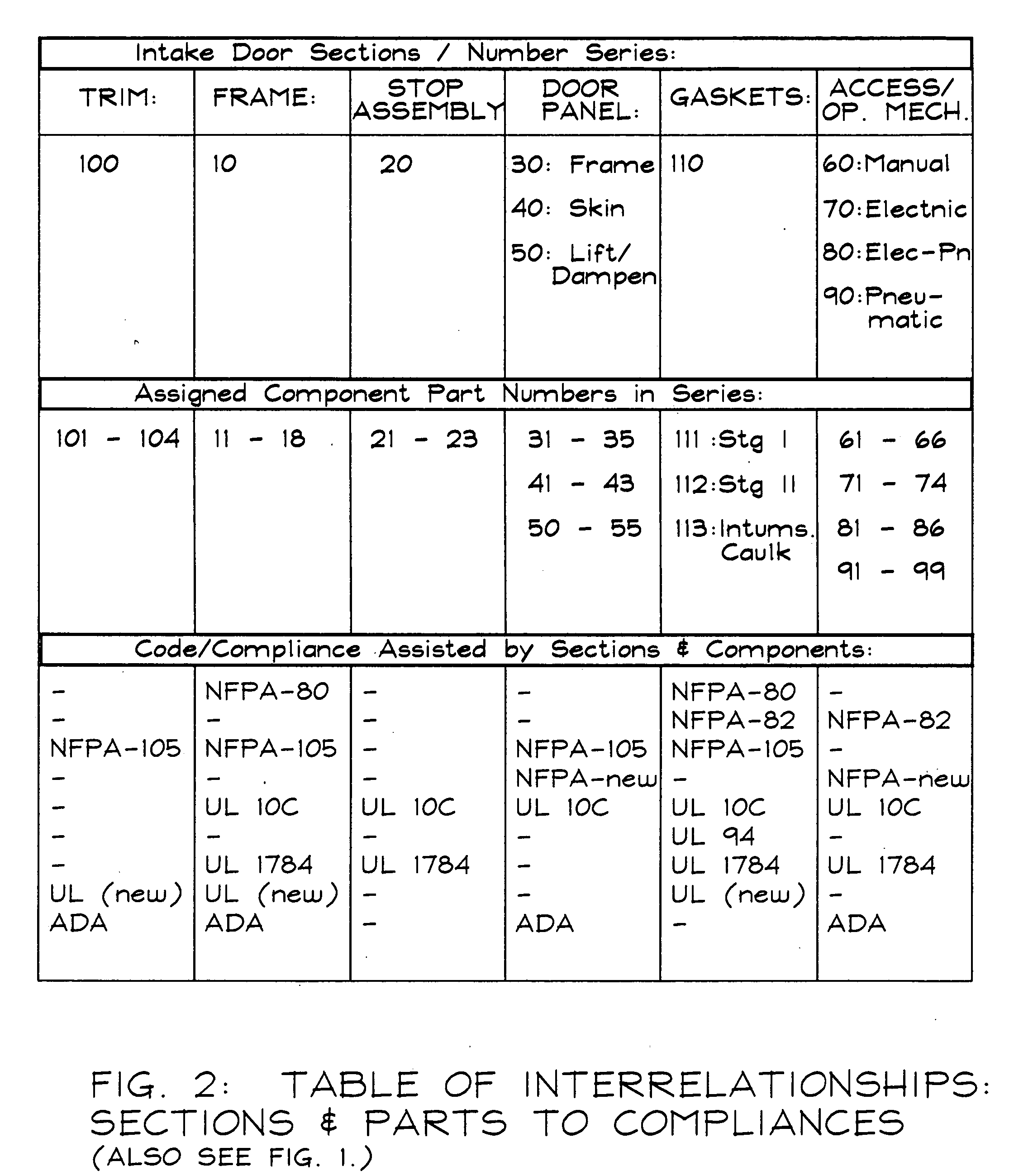Code compliant, trash and/or linen chute inlet door
a code-compliant, trash and/or linen technology, applied in the direction of chutes, transportation and packaging, etc., can solve the problems of inability to properly close and latch the inlet, nullifying the potential containment of fire and/or smoke emanating from the chute, and failure of the prior art components, etc., to achieve the effect of simple construction, less cost, and easy retrofitting to the chu
- Summary
- Abstract
- Description
- Claims
- Application Information
AI Technical Summary
Benefits of technology
Problems solved by technology
Method used
Image
Examples
Embodiment Construction
[0052] This latest inlet is designed for compliance with the applicable provisions and requirements of ADA, U.L..RTM., and NFPA to achieve an inlet that is capable of retrofit installation. This current art is further designed for compliance with a new U.L..RTM. Standard for B-Label Doors, UL 10C, which considers the effect of negative and positive pressures on doors and smoke control in a fire event. The current art is also designed to meet the criteria of UL 1784 for air tightness as an adjunct to the UL 10C criteria that also includes the control of ambient, warm and hot smoke as defined by NFPA-105, and is beyond the scope of the UL 10B approval for B-Label rated fire doors. UL 10C approval automatically achieves approval of UL 10B. UL 10B does not reach the UL 10C Standard, however.
[0053] With further regard to ADA, the current art meets the criteria for horizontal projection, mounting height of controls, the prohibition against grabbing, pinching or twisting of operational con...
PUM
 Login to View More
Login to View More Abstract
Description
Claims
Application Information
 Login to View More
Login to View More - R&D
- Intellectual Property
- Life Sciences
- Materials
- Tech Scout
- Unparalleled Data Quality
- Higher Quality Content
- 60% Fewer Hallucinations
Browse by: Latest US Patents, China's latest patents, Technical Efficacy Thesaurus, Application Domain, Technology Topic, Popular Technical Reports.
© 2025 PatSnap. All rights reserved.Legal|Privacy policy|Modern Slavery Act Transparency Statement|Sitemap|About US| Contact US: help@patsnap.com



